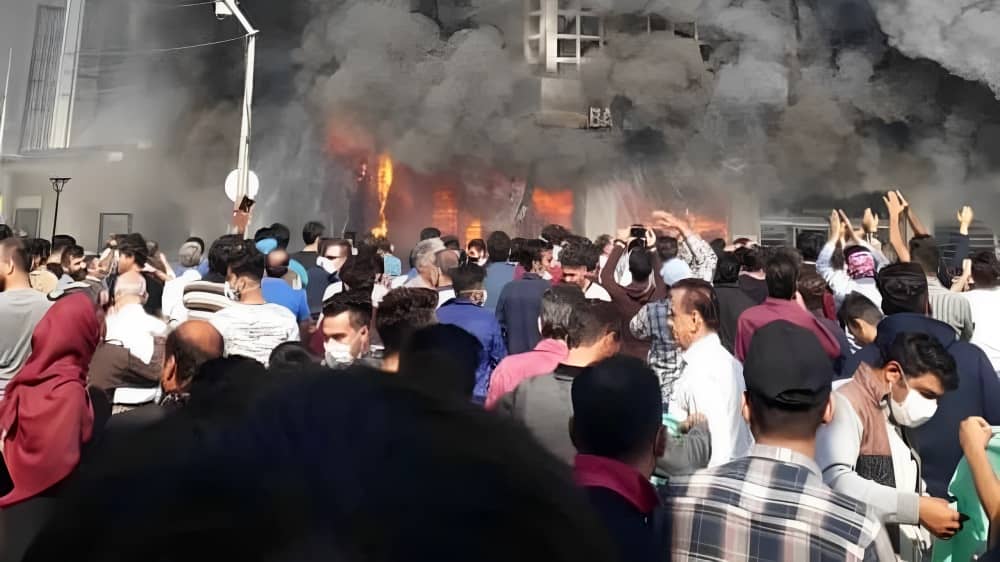
Three-minute read
In the span of a week, the Iranian regime did three things that read less like governance than stage directions for crisis: it acknowledged that a majority of nomadic households now drink tanker-delivered water; it cleared a third, higher price tier for gasoline beyond the two subsidized rations; and it urged prosecutors to treat domestic critics as enemies to be “identified, suppressed, and punished.”
On the eve of the sixth anniversary of the 2019 fuel protests, the message is hard to miss: the same bundle of scarcity and coercion that once ignited the streets is being reassembled in a country that is drier, poorer, and angrier than it was then. What has changed is not the script but the kindling—empty reservoirs behind the tankers, a public already queuing for basics behind the new fuel tier, and, behind the prosecutorial bravado, a government that knows it cannot ration and persuade at the same time.
Scarcity Becomes Policy
Iran’s water emergency is no longer a shock; it’s a system. The government’s own figures say drinking water for nomadic communities is being delivered by 351 mobile tankers, moving roughly 7 million m³ a year—and likely 8 million m³ by year-end—while drought has cut rangeland forage to 1.7 million tons, directly hitting pastoral livelihoods. In Sistan-Baluchestan, more than 700,000 people in over 3,000 villages have no piped water at all and rely on unsafe sources, a stark emblem of structural neglect.
In the cities, “quiet” rationing has crept into practice, with managers accused by a former agriculture minister of having known the shortages months ago yet steering the president toward “hard” last-minute choices. The crisis narrative is politically convenient—act late, then present a binary of disruption or discipline—but it also concedes what people already feel: scarcity is being managed, not solved.
That management is political. When the state decides who gets a tanker, which district sees overnight cutoffs, or where a new pipeline “must” go, it’s also arranging consent. But legitimacy is hard to buy with plastic tanks and police tape.
#Iran News: Former Interior Minister Warns Fuel Price Hike Could Spark Bigger Unrest Than 2019https://t.co/shGnCIUH9N
— NCRI-FAC (@iran_policy) February 7, 2025
The Old Spark Returns: Gasoline Pricing
The Pezeshkian administration’s spokeswoman has now confirmed a three-tier fuel scheme: two subsidized rations stay, while a higher-priced tier is introduced for “luxury” cars, free-zones, and—critically—station cards. A senior MP says the government’s own proposal prices that third channel at 5,000–6,000 tomans per liter, while keeping 1,500 and 3,000 for the first two rations.
Even if spun as “targeted,” this architecture recreates the politics of November 2019: opaque timing, technocratic framing, and very public pain at the pump. Multi-tier systems also breed arbitrage and resentment—drivers with the wrong card, the wrong car, or the wrong connections pay more, queue longer, and feel cheated twice.
For a society already squeezed by food inflation and wage erosion, higher marginal fuel prices are not a line item; they are a signal that tomorrow’s commute, clinic trip, or cargo run just got riskier. In 2019, that signal was enough.
#Iran: November 2019 Uprising and Its Amplifications#WeStand4FreeIran #IranProtests
https://t.co/ebush1uqRK— NCRI-FAC (@iran_policy) November 9, 2020
Preemption by Prosecution
The judiciary chief’s message to prosecutors is unmistakable: treat “creators of division” and those who “pressure livelihoods” as agents of the enemy and take pride in suppressing and punishing them. That is not routine rhetoric; it is preemptive instruction. Coupled with high-profile visits to senior clerics and appeals to “national unity,” it outlines the security playbook for the weeks ahead: frame dissent as sabotage, fold economic grievances into countersubversion, and keep the streets quiet by keeping people scared.
But the audiences overlap. The teachers short-paid in Kermanshah, the oil workers in Asaluyeh, the nurses in Mashhad, the Baluchi villagers hauling water, and the Ahvaz neighborhoods still raw from Ahmad Baledi’s death are not “outside agitators.” Treating them as such risks stitching separate wounds into a single body politic.
#Iran's Regime Gambles with #Gas Prices in a Society that Longs for a Spark to Explodehttps://t.co/DaLxSOHo4P
— NCRI-FAC (@iran_policy) August 18, 2023
Why the Regime Is Afraid—Now
Anniversaries matter in Iran’s protest calendar. The memory of November 2019 is not abstract; it is a template: surprise fuel changes; fast-spreading road anger; a security response that still haunts families. Reintroducing a price shock—however “targeted”—under conditions of water rationing and open prosecutorial threat is the political equivalent of striking a match in a dry field.
Tehran’s dilemma is the same one it faced then, only sharper. Give ground, and the image of weakness invites broader demands. Double down, and you validate the grievance while widening the circle of the aggrieved. The compromise the system prefers—concession with coercion—may no longer buffer the blow, because people can now read the choreography in real time.
On the Edge
As the sixth anniversary of the 2019 uprising arrives, the state’s own messages betray its fear: ministries advertising scarcity management, a cabinet selling multi-tier pain as “reform,” and prosecutors deputized to criminalize discontent. The regime is not preparing to solve the crisis; it is preparing to outlast the reaction to it. That is a strategy for a week, not a winter. With water delivered by tankers, fuel priced by caste, and dissent pre-labeled as treason, the ingredients that made Aban 2019 explode are back—only drier, dearer, and more widely shared. The authorities act like an uprising is imminent because, on their current path, it is.

